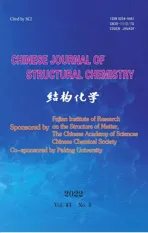Construction of the Molecular Structure Model of the Zhaotong Lignite Using Simulation and Experiment Data①
2022-04-16ZHANGDinKiLIYnHongCHANGLiPingZIChngYuZHANGYunQinTIANGuoCiZHAOWenBo
ZHANG Din-Ki LI Yn-Hong,② CHANG Li-Ping ZI Chng-Yu ZHANG Yun-Qin TIAN Guo-Ci ZHAO Wen-Bo
a (Faculty of Chemical Engineering, Kunming University of Science and Technology, Kunming 650500, China)
b (Key Laboratory of Coal Science and Technology, Taiyuan University of Technology, Ministry of Education and Shanxi Province 030024, China)
c (State Key Laboratory of Complex Nonferrous Metal Resources Clean Utilization,Kunming University of Science and Technology, Kunming 650093, China)
ABSTRACT Aiming to better understand the physiochemical properties of lignite, we select Zhaotong lignite as object and adopt simulation and experiment data to construct its molecular structure. Firstly, the important parameters including carbon skeleton, valence state and functional group of the sample are obtained by ultimate analysis, 13C NMR, XPS and Py-GC/MS. Results indicate that the ratio of aromatic carbon and aromatic bridge carbon to surrounding carbon of the sample are 40.32% and 0.14, respectively. Such results imply that the aromatic structure of the sample is dominated by benzene and naphthalene. Moreover, the ratio of aliphatic carbon is 51.55%, and the aliphatic structure is mainly comprised by methyl, methylene, quaternary carbon and oxygen-aliphatic carbon.Oxygen atoms principally exist in ether, carbonyl and carboxyl groups, of which ether accounts for 70.2%.Additionally, the contents of pyridine, pyrrole and quaternary nitrogen are 25.2%, 46.3% and 13.0%, respectively.Based on the aforementioned results, the molecular structure model of Zhaotong lignite is constructed by the method of computer-aided molecular design. Subsequently, the molecular formula of Zhaotong lignite is calculated as C183H211O55N4. Finally, in order to verify the reasonability of the constructed model, the 13C NMR of the molecular structure model is simulated by employing the basis set of GIAO/6-31G at the Gaussian 09 computing platform.These simulated results agree well with the experimental ones, which suggests that the molecular structure model of Zhaotong lignite is accurate and reasonable.
Keywords: molecular structure model, Zhaotong lignite, simulated 13C NMR, molecular simulation;
1 INTRODUCTION
The worldwide industry development gives rise to high demand for fossil energy, especially the coal resource.Particularly, lignite occupies approximately 40% of the total coal reserves and has been gaining broad attention[1]. It is more likely to be used as industrial materials rather than directly being adopted for combustion[2]. The methods of its efficient utilization mainly include liquefaction, gasification,and carbonization[3-5]. These processes involve complex reaction pathways which are closely related to the chemical composition and structural properties of lignite[6]. Therefore,it is necessary to study the molecular structure of lignite for its better application.
Due to that lignite is suffering complex heterogeneous macromolecular network, the construction of its molecular structure model is a challenging subject[7]. Hitherto, spectral analyses are widely employed to study the characteristics of functional groups, heteroatoms, and carbon structures in coal[8,9]. But it fails to clearly understand the complex crosslinking structure, arrangement and spatial configuration in the coal molecular system. However, quantum chemical calculations can easily determine these properties. It can also analyze the atomic charge distribution, the population distribution of molecules, and the distribution of the highest occupied and lowest unoccupied molecular orbitals[10]. The detailed understanding of these parameters of the molecular system helps identify the molecular structure characteristics and construct the molecular structure model. Up till now,investigations have constructed more than 134 kinds of macromolecular structure models of coals[11]. Among them,molecular structure models such as Fuchs, Wiser, Given,Honda, South Africa, etc. have attracted much attention due to that they have promoted the comprehensive utilization of local coal resources[10,12]. However, given that coals deposited in various environments have diverse physicochemical properties, the current cognizance of coal molecular structure is limited[13-15]. Hitherto, there are quite a lot of reports focusing on molecular structure model construction of mediumand high-rank coals like bituminous coal and anthracite, since their higher degree of structural order simplifies the process of molecular structure construction. However, the report on molecular structure construction of lignite is really limited due to its complex structure.
As a typical exploration area for lignite, Zhaotong located in Yunnan province bears huge lignite reserves[1,2,16].However, the low calorific value and poor thermal stability has greatly restricted its utilization. At present, there are few reports on the microstructure and chemical reactivity of Zhaotong lignite. Hence, this study selected Zhaotong lignite as the research object.13C nuclear magnetic resonance spectroscopy (13C NMR), X-ray photoelectron spectroscopy (XPS)and flash pyrolysis-gas chromatography-mass spectrometry analysis (Py-GC/MS) were used to analyze the structure characteristics of carbon and heteroatom, and quantum chemistry calculation was used to construct and optimize the molecular structure model. This study is capable of revealing the microstructure, physicochemical properties and chemical reactivity of Zhaotong lignite at the molecular level, and provides theoretical guidance for its clean and efficient utilization.
2 EXPERIMENTAL
2. 1 Coal sample
The coal sample was collected from Zhaotong Coal Mine in Yunnan Province. It was crushed and sieved to 80 mesh.According to the Chinese national standard (GB/T 7560-2001), hydrochloric acid and hydrofluoric acid were used to for Zhaotong lignite (ZL) to remove minerals. After washing and centrifugal extraction, the sample was dried in the oven introduced by nitrogen under 105~110 °C until its weight stays unchanged. After that, the sample was preserved in a container filled with nitrogen to avoid possible oxidation.
2. 2 Coal property analyses
The proximate analysis and ultimate analysis of ZL were conducted according to Chinese national standards of GB/T212-2008, GB/T19227-2008, GB/T214-2007, and GB/T476-2008. The analysis results are listed in Table 1. Among these,demineralized sample was used in the ultimate analysis to eliminate the influence of inorganic mineral on the construction process of lignite molecular structure.

Table 1. Coal Property Analyses of ZL
2. 3 Characterization of 13C NMR, XPS, and Py-GC/MS
13C NMR was adopted to characterize the carbon structure parameters of ZL. It was performed on Bruker Avance III NMR spectrometer. The test conditions of resonant frequency,magic angle rotation speed, contact time and pulse delay were 150.9 MHz, 12 kHz, 4 ms and 3 s, respectively. The chemical shift was calibrated by TMS.
XPS analysis was conducted on a PE Phi 5400 X-ray photoelectron spectroscopy analyzer in order to obtain the heteroatoms structure parameters. The light source is MgKαX-ray, and the power is 150 W. Spectra were recorded in the fixed analyzer transmission mode. The hydrocarbon peak in C 1s was set as 284.8 eV to correct the binding energy before the measurement.
Py-GC/MS was performed on a CDS Analytical Pyro Probe 5250 GC/MS analyzer (Thermo Scientific Focus GC,Trace DSQ2) to verify the consistency between the pyrolysis products and the results of XPS and13C NMR analysis. The maximum pyrolysis temperature was 700 °C, the sample mass was 1 mg, the split ratio was 1:70, and the heating rate was 10 °C/ms.
2. 4 Molecular model construction scheme
The molecular model construction process of ZL is illustrated in Fig. 1.13C NMR, XPS and Py-GC/MS were conducted to analyze the structural properties of ZL, and then the initial molecular model of ZL was established according to the structural parameters. Finally, the initial molecular model was adjusted and optimized several times until the simulated13C NMR spectrum was consistent with the experimental13C NMR spectrum. Among these, molecular configuration optimization adopted density functional theory (DFT)M06-2X/3-21G basis set[17], and simulation13C NMR used GIAO/6-31G basis set[18]. Moreover, all computing tasks were performed on the Gaussian 09 computing platform[19].
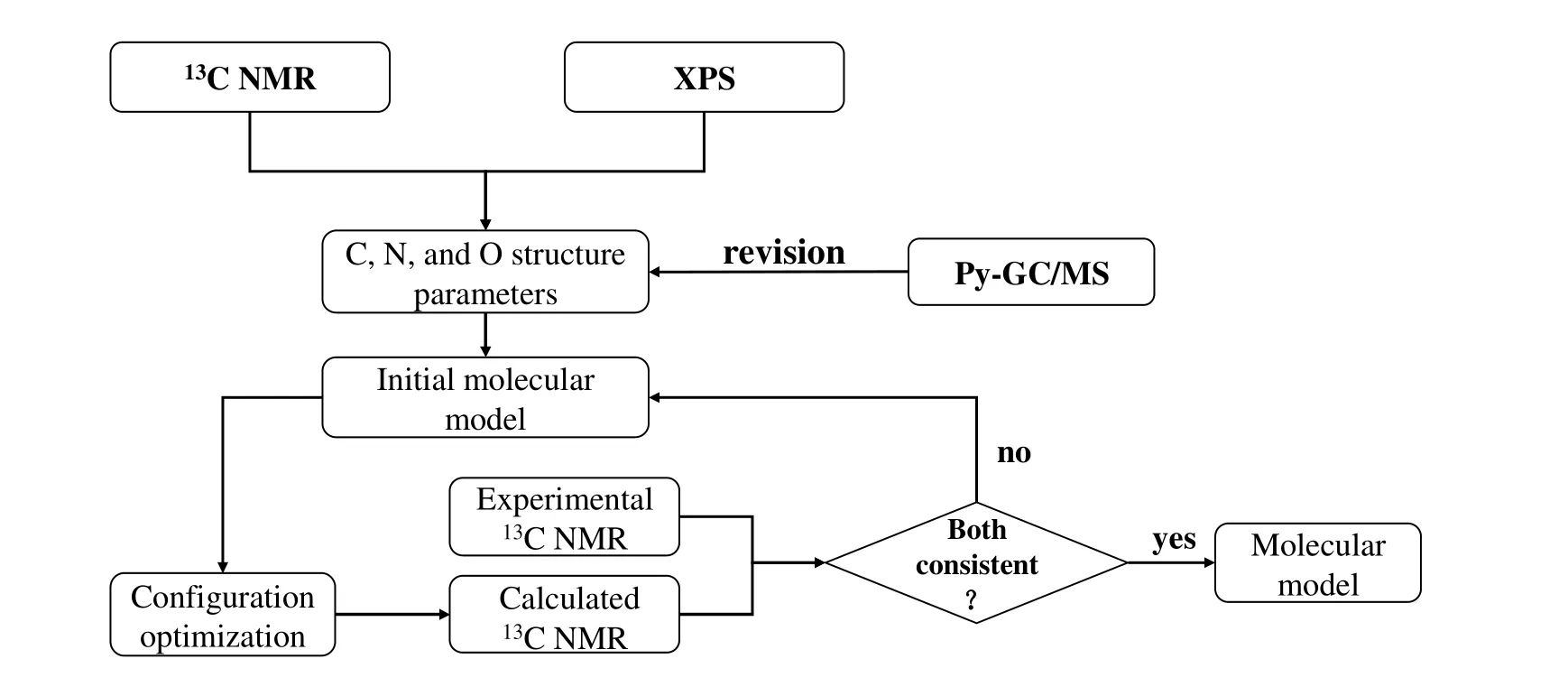
Fig. 1. Molecular model construction flow chart
3 RESULTS AND DISCUSSION
3. 1 13C NMR analysis
The13C NMR spectrum of lignite was divided into three chemical shift (δ) regions[20-23]. Among these, aliphatic carbon(0~90 ppm) and aromatic carbon (90~170 ppm) account for the largest area, while carboxyl/carbonyl carbon (170~220 ppm) is the least. In order to accurately analyze the carbon structure of ZL, peak fitting of13C NMR spectrum was performed. As shown in Fig. 2, the13C NMR peak fitting curves of ZL is divided into 18 peaks, corresponding to different occurrence forms of carbon in the molecular structure[14,24]. Table 2 displays the carbon structure parameters and chemical shifts of the characteristic peaks.

Fig. 2. 13C NMR peak fitting spectrum
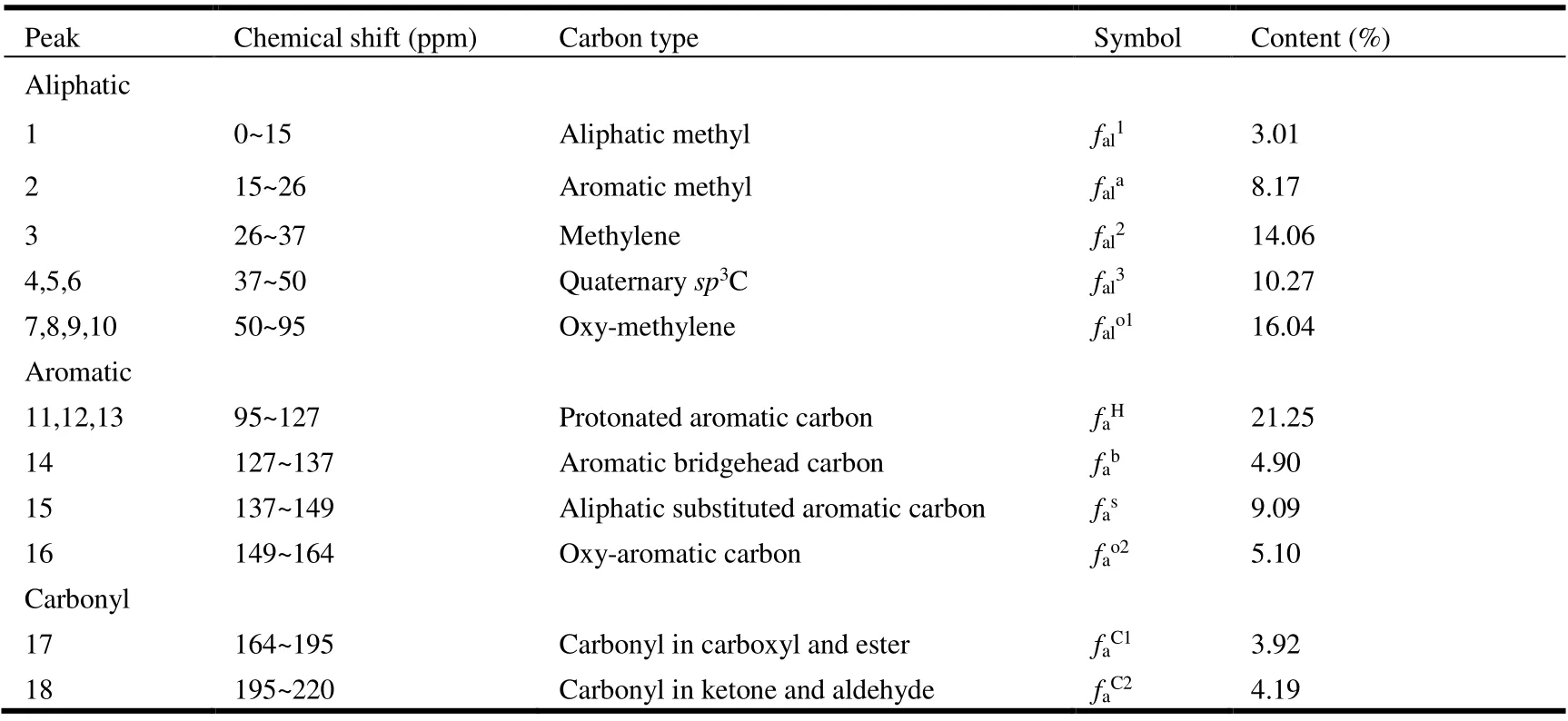
Table 2. Parameters of Carbon-containing Functional Groups in 13C NMR Spectrum
Table 3 shows the parameters of the carbon-containing structure calculated according to the content of carbon components in Table 2. The aromatic carbon ratio of 40.34%indicates that the degree of condensation of its molecular structure is low. Moreover, the aliphatic carbon ratio of 51.55% reveals that aliphatic carbon structure is an important component of ZL molecule. It is worth noting that the ratio of aromatic bridging carbon to surrounding carbon (χb) is a key parameter for calculating the number of aromatic rings in aromatic clusters[25]. Table 3 shows that the χbis 0.14, which is between the monocyclic benzene (0) and the bicyclic naphthalene (0.25), indicating that the aromatic carbon skeleton of ZL is mainly composed of benzene and naphthalene. Furthermore,Cnof 1.55 suggests that the average methylene length number in the adipose carbon chain is 2.

Table 3. Summary of Carbon-containing Structural Parameters
3. 2 XPS analysis
XPS has the advantages of nondestruction and convenience,and can provide a majority of information[26-28]. In this study,XPS was conducted to ensure the composition of heteroatoms in lignite molecules. Results regarding the O 1s(a) and N 1s(b) peak fitting spectra and parameters are displayed in Fig. 3 and Table 4, respectively.
Things were in this state, and the Princess was about fifteen years old, when Prince Narcissus, attracted by the report of Queen Frivola s gay doings, presented himself at the court

Fig. 3. O 1s (a) and N 1s (b) peak fitting spectra
O 1sspectrum was divided into five peaks. It can be found that ether oxygen C-O/O-C-O content accounts for 70.2% of the total oxygen content, followed by COOH and C=O of 12.2% and 13.8%, respectively. It is worth noting that inorganic oxygen and adsorbed oxygen account for 1.3% and 2.5%, respectively, which do not participate in the formation of the molecular structure of ZL. Therefore, it is necessary to deduct inorganic oxygen and adsorbed oxygen during the molecular model construction[29]. N 1sis divided into four peaks, in which the ratio of pyrrole nitrogen is dominant with 46.3%. Such high content of pyrrole nitrogen may be related to the large amounts of pyrroles in the chlorophyll structure of plants. The pyrrole is an aromatic conjugated system with high stability, and it still exists even after a long evolution during coal formation[30]. The quaternary nitrogen and pyridine nitrogen account for 18.3% and 25.2%, respectively.Pyridine, widely found in plant alkaloids, is a stable aromatic conjugated system[31]. Quaternary nitrogen refers to the pyridine nitrogen condensed within the polycyclic aromatic structural units. It takes place of carbon inside the polycyclic aromatic structure[32]. According to13C NMR analysis results,the aromatic structure of ZL is dominated by monocyclic benzene and bicyclic naphthalene, so it can be judged that quaternary nitrogen exists in quinoline. It is generally believed that nitrogen oxides are generated by the oxidation of pyridine nitrogen in the air. Therefore, only pyridine,pyrrole and quaternary nitrogen need to be considered in the process of constructing the ZL molecular model.

Table 4. Distributions of Oxygen and Nitrogen Forms in ZL from XPS Analysis
3. 3 Py-GC/MS analysis
Rapid pyrolysis can reduce the secondary reaction in the pyrolysis process, and the volatiles generated are more likely to reflect the real structural characteristics of macromolecules in coal[33,34]. In this study, Py-GC/MS is mainly used to determine the consistency between the types of structural units obtained by13C NMR and XPS analysis and the pyrolysis products. Fig. 4 is the total ion chromatogram of ZL pyrolysis products and Table 5 shows the composition and content of substances released during pyrolysis process.

Fig. 4. Total ion chromatogram of analytical pyrolysis for ZT
Among these, aliphatic compounds in the pyrolysis products mainly include alkanes and alkenes. Alkanes are formed due to the broken alkyl side chain connected with aromatic ring. Then, the alkanes may pyrolyze secondarily to generate alkenes[33]. In this study, the pyrolysis products of ZL have high content of alkane-containing compounds and alkene-containing compounds with 62.25% and 9.82%,respectively. That is, molecular structure of ZL comprises the majority of alkyl side chains. Aromatic compounds are dominated by homologues of benzene and naphthalene, consistent with13C NMR analysis results. During pyrolysis, the cracking bridge bond plays a vital role in aromatic compounds formation[35]. It consists of alkyl bridge and oxygen-containing ether bond. The former breaks to form aromatic compounds containing alkyl substituents. However, the latter may break and then converts into alcohols and phenols. It can be found from Table 5 that the pyrolysis products of ZL are of great phenolic substances. Previously, phenols in pyrolysis products are mainly derived from aromatic structures with oxygencontaining substituents, especially aromatic ether structures[36].Therefore, it can be inferred that the ZL molecule contains many aromatic ether structures. It is worth mentioning that the nitrogen element in the ZL molecule mainly exists in pyrrole according to the N 1sanalysis, while the pyrrole structure is not found in the substances released by pyrolysis. Such phenomenon was attributed to that pyrrole tends to gradually convert into pyridine with more stable structure during the pyrolysis process[32].
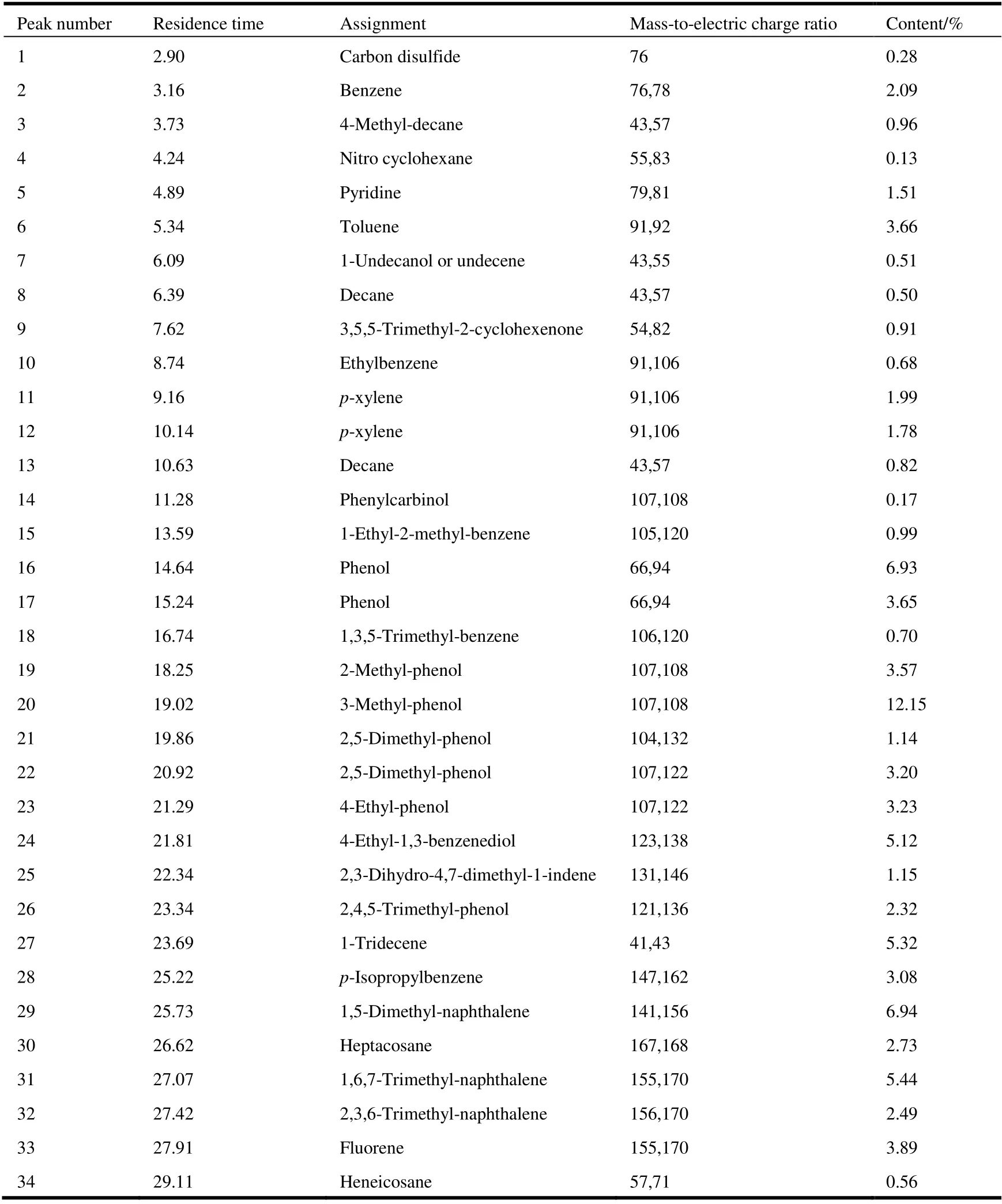
Table 5. Composition and Content of Substances Released during Pyrolysis
3. 4 Molecular formula and structural unit parameters of ZL
According to previous researches[13,37,38], there are two main methods to calculate the molecular formula of lignite, i.e.,calculated by assumption of the number of carbon atoms and the molecular weight of coal molecules. The former is to firstly assume the number of carbon atoms, and then uses the number of total atoms to calculate the number of specific structural units. However, this method can hardly adjust the type and number of aromatic structures to match the results of spectral analysis in the calculation process. The latter is to assume the molecular weight of the coal molecules, and then calculate the number of atoms. Specifically, it firstly determines the type and quantity of aromatic structure, and then calculates the total carbon content according to the ratio of aromatic carbon content to the total carbon content. Therefore, the aromatic carbon rate, aliphatic carbon rate andχbcalculated by this method are consistent with the results of spectral analysis, and the method is adopted in the current work. Previous study has claimed that the maximum vitrinite reflectivity (Ro,max) of ZL is 0.3, categorized in low-rank coal[39]. It is reported that low-rank coal molecules have the relative molecular weight of approximately 3000~3500, and the number of carbon atoms is about 200[14,22,23]. Therefore, the molecular weight of ZL was assumed as 3000~3500 in this study, which is sufficient to reflect the complexity and diversity of ZL molecular structure.
3. 4. 1 Aromatic and aliphatic carbon
The results of13C NMR and XPS analyses show that benzene, naphthalene, pyrrolic, quinoline, and pyridine are the main aromatic structures in ZL molecule. In order to make the χbclose to the value calculated by experimental results, i.e.,0.14, the relative quantities of benzene, naphthalene, pyridine,quinoline, and pyrrole are constantly adjusted. The final number of benzene, naphthalene, pyrrolic, quinoline, and pyridine was calculated as 2, 4, 2, 1, and 1, respectively, and the total number of aromatic carbon atoms is 74. Based on the aromatic carbon rate of ZL with 40.34%, the total number of carbon atoms was calculated as 183. According to13C NMR analysis, the aliphatic carbon structure of ZL is mainly composed of methyl, methylene, quaternary carbon and oxygen aliphatic carbon occupying 11.18%, 14.06%, 10.27%and 16.04% of the total carbon atoms, respectively. Therefore,the number of methyl, methylene, quaternary and oxygenaliphatic carbons was calculated as 20, 28, 19 and 27 correspondingly. The above-mentioned results are listed in Table 6.

Table 6. Types of Structure Units in the Structural Model of ZL
3. 4. 2 Heteroatomic structure and molecular formula

Table 7. Parameters of the Molecule Structural Model
3. 5 Construction of molecular structure model
Molecules mainly exist in the state of nature in the lowest energy form. Therefore, only the lowest energy configuration can reflect the properties of coal macromolecular system[42].For this reason, the key for accurately constructing the molecular model is to establish the most stable configuration with the lowest energy. According to the structural parameters listed in Table 6, the 2D plane model and 3D space model of ZL were drawn by ChemDraw. Then, the atomic coordinates were imported into Gaussian 09 software for configuration optimization. Among these, the self-consistent field molecular orbital method M06-2X/3-21G based set on density functional theory (DFT) was used as the basis set for optimization calculation. The optimized model was imported into Gaussian 09 software to simulate the13C NMR spectrum of ZL at 6-31G (d,p) level using the Gauge-Independent Atomic Orbital (GIAO) method. If the calculated results coincide with the results determined by13C NMR, it can be identified as reliable structure model. Otherwise, it is essential to re-adjust and re-optimize the molecule configuration.Additionally, in order to ensure that the H/C atomic ratio is consistent with the ultimate analysis, the composition of aliphatic carbon needs to be appropriately adjusted in the process of constructing ZL molecular model. After a lot of repeated calculations, a reliable molecular configuration was finally obtained (Fig. 5).
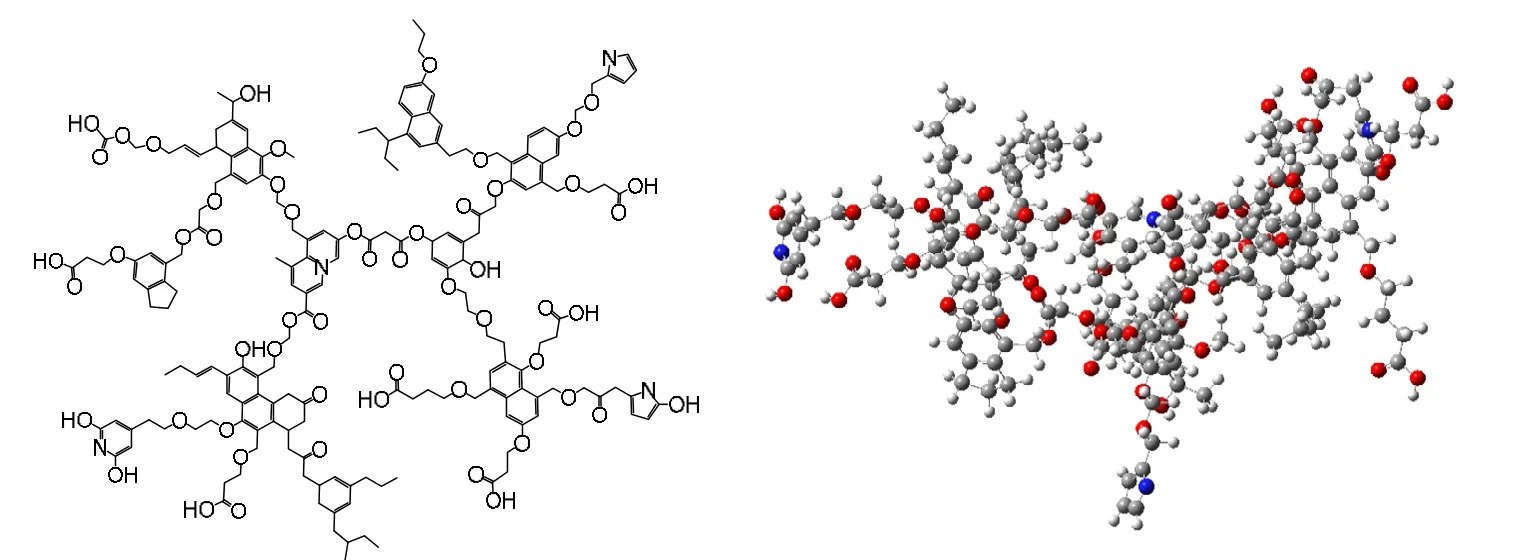
Fig. 5. Molecular structure model diagram of ZL: gray, silver, red and blue represents carbon, hydrogen, oxygen and nitrogen, respectively
After optimization, the total energy of the molecular system decreased significantly, and the molecular configuration reached a stable state. Fig. 6 shows the simulated and experimental13C NMR spectrum of ZL. Among these, the chemical shift at 0~90 ppm is the aliphatic carbon peak,90~170 ppm is the aromatic carbon peak, 170~180 ppm is the carboxyl carbon peak, and 200~220 ppm is the carbonyl carbon peak. It is noticed that the experimental spectrum agrees well with the simulated one in these chemical shift regions, suggesting the reliability of established molecular structure model of ZL.
In terms of structural characteristics, the aromatic structure of ZL is mainly connected by methylene, oxygen bridge,methoxy group and aliphatic ring. The oxygen-containing functional groups were mainly distributed at the molecular edge. The distribution of aromatic clusters is very dispersed in space and has many aliphatic side chains. In terms of geometrical configuration, ZL molecular model has obvious three-dimensional characteristics. Compared with mediumand high-rank coals[25,29,30,40-42], the aromatic carbon framework of ZL molecules is composed of benzene and naphthalene, while the medium- and high-rank coals mainly comprise polycyclic aromatic hydrocarbon. The total amount of oxygen-containing functional groups in ZL is greater than that of the medium- and high-rank coal. Moreover, the ZL molecular model has much and longer aliphatic side chains,and the aromatic lamellas arrange irregularly in space, while the medium- and high-rank coal has less and shorter aliphatic side chains and its aromatic lamellas arrange regularly in space. Through this model, the molecular structure characteristics of ZL can be understood more intuitively, helping reveal the macroscopic properties of ZL from the microscopic molecular perspective. In addition, the molecular structure model of ZL can be used as the basis for the study of the carbonization, liquefaction and gasification of ZL, and provide theoretical guidance for the follow-up research.

Fig. 6. Experimental and simulated 13C NMR of ZL
4 CONCLUSION
(1) The molecular formula of ZL is C183H211O55N4, the aromatic carbon ratio is 40.34%, and the aliphatic carbon ratio is 51.55%. The main aromatic structures are naphthalene, benzene, pyrrole, quinoline and pyridine. The aliphatic structure includes methyl, methylene, quaternary carbon and oxygen-aliphatic carbon. The types of oxygen-containing functional groups are ether bond, hydroxyl group, carboxyl group and carbonyl group. Nitrogen atoms occur in pyrrole,pyridine, and quaternary nitrogen.
(2) ZL molecular structure model optimized by density functional theory M06-2X functional has obvious threedimensional characteristics. The simulated13C NMR spectrum agrees well with the experimental spectrum, indicating the rationality of the constructed ZL molecular structure.
(3) The aromatic structures of ZL are mainly connected by methylene, oxygen bridge, methoxy group and aliphatic ring.The oxygen-containing functional groups are mainly distributed at the molecular edge. Aromatic clusters dispersedly distribute in space and have many aliphatic side chains. The aromatic layer irregularly arranged, and its configuration presents a disorder in space.
杂志排行
结构化学的其它文章
- Structural and Electronic Properties of Lutetium Doped Germanium Clusters LuGen(+/0/-) (n = 6~19):A Density Functional Theory Investigation①
- Discovery of Benzimidazole Derivatives as Novel Aldosterone Synthase Inhibitors: QSAR, Docking Studies, and Molecular Dynamics Simulation①
- QSAR Models for Predicting Additive and Synergistic Toxicities of Binary Pesticide Mixtures on Scenedesmus Obliquus①
- Preparation, Crystal Structure and Fungicidal Activity of N-(5-(benzofuranol-7-oxymethyl)-1,3,4-thiadiazol-2-yl)amide Compounds①
- Antibiotic Silver Particles Coated Graphene Oxide/polyurethane Nanocomposites Foams and Its Mechanical Properties①
- Planar Tetracoordinate Carbon in 6σ + 2π Double Aromatic CBe42- Derivatives①
